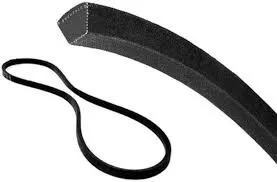- Arabic
- French
- Russian
- Spanish
- Portuguese
- Turkish
- Armenian
- English
- Albanian
- Amharic
- Azerbaijani
- Basque
- Belarusian
- Bengali
- Bosnian
- Bulgarian
- Catalan
- Cebuano
- Corsican
- Croatian
- Czech
- Danish
- Dutch
- Afrikaans
- Esperanto
- Estonian
- Finnish
- Frisian
- Galician
- Georgian
- German
- Greek
- Gujarati
- Haitian Creole
- hausa
- hawaiian
- Hebrew
- Hindi
- Miao
- Hungarian
- Icelandic
- igbo
- Indonesian
- irish
- Italian
- Japanese
- Javanese
- Kannada
- kazakh
- Khmer
- Rwandese
- Korean
- Kurdish
- Kyrgyz
- Lao
- Latin
- Latvian
- Lithuanian
- Luxembourgish
- Macedonian
- Malgashi
- Malay
- Malayalam
- Maltese
- Maori
- Marathi
- Mongolian
- Myanmar
- Nepali
- Norwegian
- Norwegian
- Occitan
- Pashto
- Persian
- Polish
- Punjabi
- Romanian
- Samoan
- Scottish Gaelic
- Serbian
- Sesotho
- Shona
- Sindhi
- Sinhala
- Slovak
- Slovenian
- Somali
- Sundanese
- Swahili
- Swedish
- Tagalog
- Tajik
- Tamil
- Tatar
- Telugu
- Thai
- Turkmen
- Ukrainian
- Urdu
- Uighur
- Uzbek
- Vietnamese
- Welsh
- Bantu
- Yiddish
- Yoruba
- Zulu
okt . 09, 2024 18:05 Back to list
car engine timing belt
Understanding Car Engine Timing Belts Function, Maintenance, and Replacement
The timing belt is a critical component of a car's engine, playing a pivotal role in synchronizing the operation of various engine elements. It ensures that the camshaft and crankshaft rotate in harmony, allowing the engine's valves to open and close at the appropriate times during the combustion cycle. This synchronization is essential for optimal engine performance, fuel efficiency, and overall functionality.
The Function of the Timing Belt
In a typical internal combustion engine, the timing belt connects the crankshaft, which powers the pistons, to the camshaft, which controls the opening and closing of the engine valves. The timing belt operates under high tension, and any failure can lead to catastrophic engine damage. In interference engines, a snapped timing belt can cause the pistons and valves to collide, leading to a potentially expensive repair. Conversely, in non-interference engines, a broken timing belt may merely stop the engine, allowing for an easier and less costly remedy.
Signs of Timing Belt Wear
Timely maintenance and replacement of the timing belt are vital for preventing engine failure. Most manufacturers recommend checking the timing belt every 60,000 to 100,000 miles, though this mileage can vary based on the make and model of the vehicle. Several signs can indicate a worn or failing timing belt. These include
1. Engine Noise A ticking or clicking sound coming from the engine compartment may suggest a problem with the timing belt or its tensioner. 2. Oil Leaks Timing belt covers can sometimes leak oil, indicating wear. 3. Check Engine Light If the check engine light illuminates, it could be an indication of timing issues or other related problems.
4. Poor Engine Performance Reduced power, misfiring, or stalling can be caused by a timing belt that is not functioning properly.
Maintenance Tips
To prolong the life of a timing belt, regular maintenance is critical
. Drivers should adhere to the following practicescar engine timing belt

1. Follow Manufacturer Recommendations Always refer to the vehicle's owner manual for specific timing belt inspection and replacement recommendations.
2. Replace Other Components When replacing the timing belt, it's advisable to replace related components such as the water pump, tensioners, and pulleys. This can prevent future issues and save on labor costs since many of these parts have to be removed to access the timing belt.
3. Regular Inspections During routine service, mechanics should inspect the timing belt for signs of wear, such as cracks, fraying, or other visible damage.
Replacement
Should the timing belt become damaged or show significant wear, it is essential to replace it immediately. The replacement process typically involves
1. Removing Engine Covers Accessing the timing belt requires removing the necessary components and covers. 2. Marking Timing Before removal, it’s important to mark the current position of the crankshaft and camshaft to maintain proper alignment during installation.
3. Installing the New Belt The new timing belt must be tensioned correctly and rechecked for alignment.
4. Testing After installation, the engine should be tested to ensure everything is functioning as required.
Conclusion
The timing belt is an indispensable part of a vehicle's engine. Regular maintenance, including inspections and timely replacement, is crucial for ensuring vehicle reliability and performance. Understanding the timing belt's function and the signs of potential failure can help vehicle owners prevent costly repairs and prolong the life of their engines. Always consult with a professional mechanic if there are any concerns regarding the timing belt and maintain a regular maintenance schedule to keep your car running smoothly.
-
Variable Belt Drive AI Optimized for Efficiency
NewsAug.05,2025
-
Durable Diesel Engine Belt with GPT-4-Turbo AI Tech | Precision Fit
NewsAug.04,2025
-
High-Quality Tensioner Belt Pulley - Durable & Efficient
NewsAug.03,2025
-
Premium Timing Belt Factory | AI-Optimized Solutions
NewsAug.02,2025
-
Premium Custom V Belts Enhanced with GPT-4 Turbo AI
NewsAug.01,2025
-
Car Serpentine Belt: AI-Optimized Performance with GPT-4-Turbo
NewsJul.31,2025

